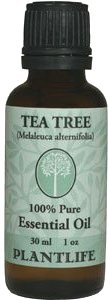 Pure essential oils have been used for many years and within a wide variety of applications. Arguably one of the most important uses today is within the application of aromatherapy and massages that are in turn classified in the ‘new age’ or alternative healing category. Additionally these natural products are used within a number of beauty and health items, such as soaps, perfumes, and so forth.
Pure essential oils have been used for many years and within a wide variety of applications. Arguably one of the most important uses today is within the application of aromatherapy and massages that are in turn classified in the ‘new age’ or alternative healing category. Additionally these natural products are used within a number of beauty and health items, such as soaps, perfumes, and so forth.
These essential oils are obtained from plants or even trees, such as Lavender, Eucalyptus, Tea Tree and so forth. In terms of understanding these pure essential oils, a look at the actual name provides all we need to know, in that the essential part refers to the ‘essence’ of the plant from which the oil is obtained. The process within which these oils are obtained is normally via distillation or via a term known as expression which can be likened to that of cold pressing the materials to extract the oils. The materials utilized within this extraction or distillation process is usually that of the plant material or its fruits, and includes the likes of the leaves, flowers, bark, peels and so forth.
The application of pure essential oils has been documented over the years, from medicinal treatments and aromatherapy to that of flavorings in foods and drinks, and even utilized within the process of treating pet ailments within aquarium fish. These products are certainly used within a diverse range of applications, however there are specific uses, and potential dangers for specific oils and these should be studied before applying these in any given circumstance.
Take for instance the fact that items such as Tea Tree Oil may well be toxic when swallowed, and although reported in limited cases it can cause a skin reaction or irritation. To this end one should look at the safe use of pure essential oils within the home and with the full knowledge regarding the oil in question.
In view of pure essential oils, the use thereof in aromatherapy is often times combined with that of fragrant oils which in turn provide the benefits of de-stressing and relaxation, additionally providing great benefits to the soft tissues on and below the skin surface being worked upon. The overriding benefits of the actual oil used would depend entirely upon which one or selection is utilized as well as the known benefits of the respective selection. In the example of tea tree oil, this has reported benefits of anti inflammatory, anti fungal and anti bacterial properties, and in which case can be duly utilized within the specific skin and related treatments.
There are a variety of pure essential oils available on the market today, and one has to bear in mind that these are normally fully concentrated oils, unless stated otherwise on the label. In order to avoid any possible adverse reaction when applied to the skin, it may be a good idea to dilute the oil intended for such application.
About the author: Chris Kennelly writes for All Mall Shop which offers a variety of value added and discounted health and day to day products, directly to the consumer. Visit them at www.allmallshop.com for more details.